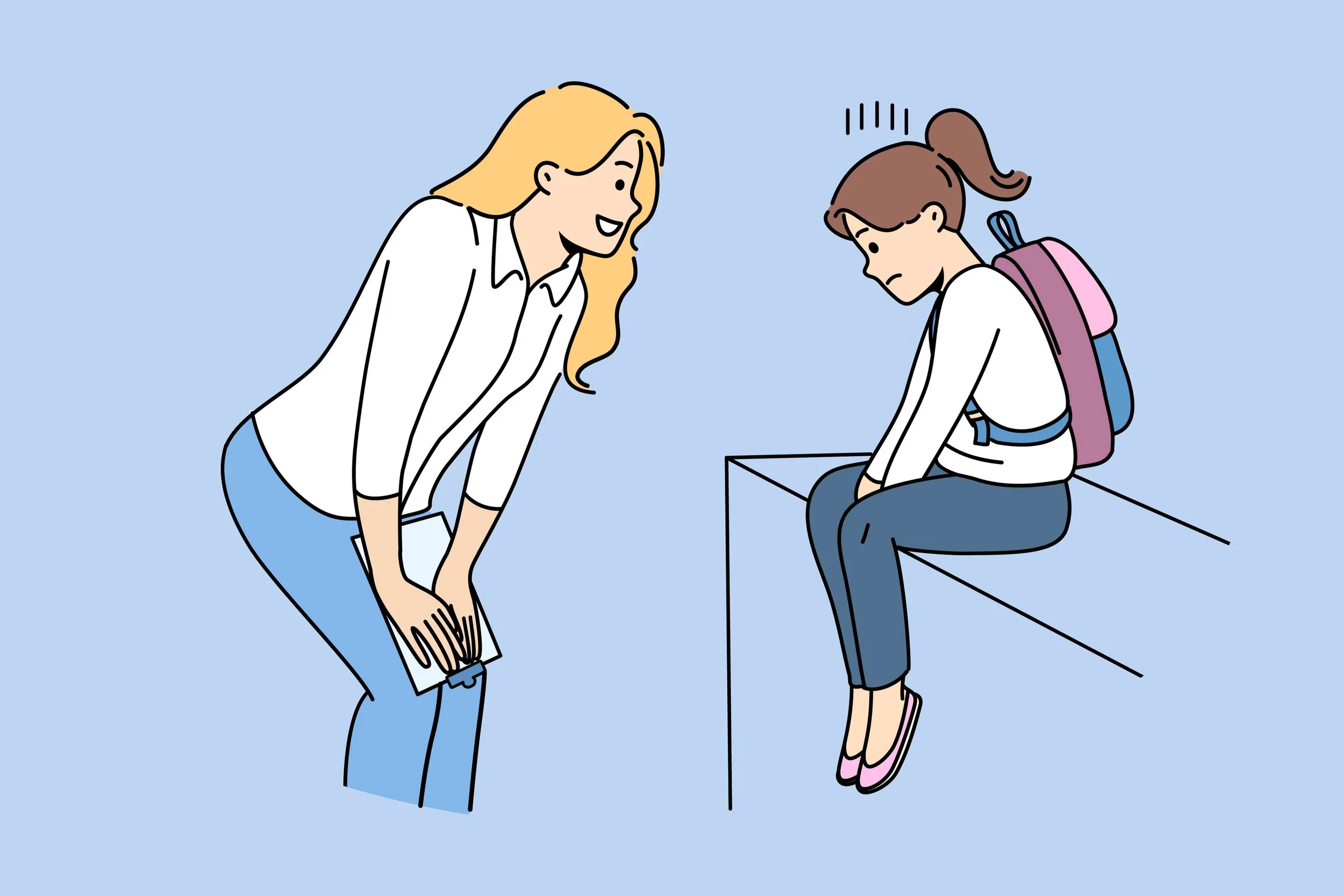Helping Kids Cope With Big Feelings Without Meltdowns
Helping Kids Cope With Big Feelings Without Meltdowns
Every parent has seen it: a tiny spark of frustration that suddenly becomes a full-blown meltdown.
The toy breaks. The snack is wrong. Someone said “no.”
These moments aren’t just about misbehavior — they’re developmental milestones in emotional growth. Young kids don’t yet have the tools to regulate big feelings on their own, so they rely on adults to co-regulate — to guide, model, and help them return to calm.
The good news? You can teach your child to manage big feelings without chaos. It takes patience, structure, and a lot of practice — but over time, these small moments build lifelong emotional resilience.
Why Big Feelings Overwhelm Young Kids
When a child is overwhelmed, it’s not about willpower — it’s about brain development.
The amygdala (the emotional alarm center) fires fast and hard.
The prefrontal cortex (the reasoning part) is still developing through age 25.
When big emotions hit, logic temporarily shuts down.
👉 So when your 4-year-old throws herself on the floor over the wrong color cup, she’s not “being dramatic.” Her brain is literally flooded.
✨ Understanding this helps parents shift from reacting (“Stop it!”) to supporting (“You’re mad. I can help you.”).
Key idea: Calm is caught, not taught. Your calm presence is the first lesson in self-regulation.
Step 1: Name and Validate the Feeling
When kids are upset, they need to feel seen before they can calm down.
Try this:
“You’re mad because I turned off the TV.”
“You’re disappointed we can’t go to the park right now.”
“You’re sad that your friend went home.”
👉 Validation doesn’t mean you agree or give in. It means you acknowledge the emotion so your child feels understood.
❌ Avoid: “You’re fine,” or “Stop crying.”
✅ Try: “You’re sad. It’s okay to be sad.”
✨ Once a feeling is named, intensity starts to drop — the prefrontal cortex begins re-engaging.
👉 See also: Why Naming Feelings Helps Kids Learn Emotional Control
Step 2: Offer Comfort, Not Control
After validation, shift into co-regulation — helping your child calm down by borrowing your calm.
Try:
Gentle tone, slow breathing, relaxed posture.
Offer closeness: “Do you want a hug or some space?”
Model grounding: “Let’s take a big breath together.”
👉 Avoid rushing. You’re helping their nervous system reset — not trying to fix the problem right away.
✨ Over time, your calm presence teaches them that big feelings are safe and manageable.
Pro Tip: Think of yourself as your child’s “emotional anchor.” When they drift into stormy waters, you’re the steady point they return to.
Step 3: Create a Calm-Down Routine
Kids learn best through predictable routines, even for emotions.
Create a simple calm-down plan you use consistently, such as:
Pause — “Let’s take a break.”
Breathe — Use a visual cue (like blowing bubbles or smelling flowers).
Choose — Let them pick between calming tools: music, drawing, or hugging a stuffed animal.
Reflect — After calm returns, briefly talk about what happened.
👉 Keep the steps visual with a calm-down chart or feelings wheel.
👉 Practice the routine before meltdowns happen, so it feels familiar.
✨ Repetition builds emotional muscle memory. Kids eventually learn to use these steps on their own.
👉 See also: Breathing & Calm-Down Strategies That Actually Work for Young Kids
Step 4: Use Tools That Support Regulation
Young kids need concrete tools to manage abstract emotions. Try:
Calm-down kits: basket with sensory items (stress ball, soft toy, small book).
Feeling wheels: visual choices for identifying emotions.
Music corner: a cozy spot for soft music or quiet reflection.
Puppets or stuffed animals: let them “talk through” their feelings safely.
✨ Tools externalize emotion — they give children something to do instead of melting down.
Step 5: Teach Recovery, Not Perfection
After the storm passes, resist the urge to lecture. The learning happens after calm returns.
Ask simple reflection questions:
“What were you feeling?”
“What helped you feel better?”
“What could we do next time?”
Then praise effort, not outcome:
“You got really mad, but you calmed down fast this time. That was hard work!”
✨ This reinforces the idea that feelings are normal and manageable — and that recovery is success.
Step 6: Model Emotional Regulation Yourself
Children learn regulation through watching you. Your reactions teach them how to handle frustration, disappointment, and stress.
Try narrating your own emotional moments:
“I’m feeling frustrated. I’m going to take a breath before I talk.”
“That was upsetting. I need a moment to calm down.”
👉 You’re showing that feelings aren’t dangerous — and that calm can be rebuilt.
✨ Remember: You don’t have to be perfectly calm. You just have to show how to come back to calm.
Step 7: Anticipate Triggers and Plan Ahead
Preventing meltdowns isn’t about avoiding emotions — it’s about helping kids prepare for tricky moments.
Try:
Talk about plans and changes before they happen.
Offer choices when possible (control reduces power struggles).
Keep routines consistent so kids know what to expect.
Build in breaks for hungry, tired, or overstimulated moments.
✨ Emotional regulation thrives on predictability and practice.
Meltdowns are not signs of failure — they’re windows into emotional development. Each one is a chance to help your child practice naming, calming, and recovering from big emotions.
By responding with empathy, structure, and consistency, you’re teaching your child that feelings are okay and that they have the tools to handle them. Over time, those lessons create kids who are confident, resilient, and emotionally intelligent — the foundation for success in every part of life.
This content is for educational purposes and is not a substitute for professional medical or psychological advice.
Popular Parenting Articles


